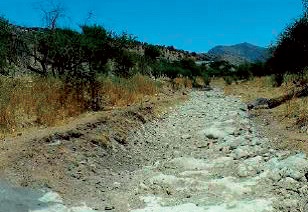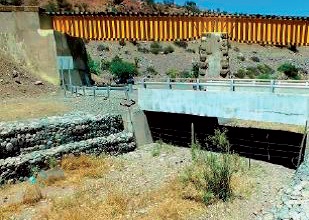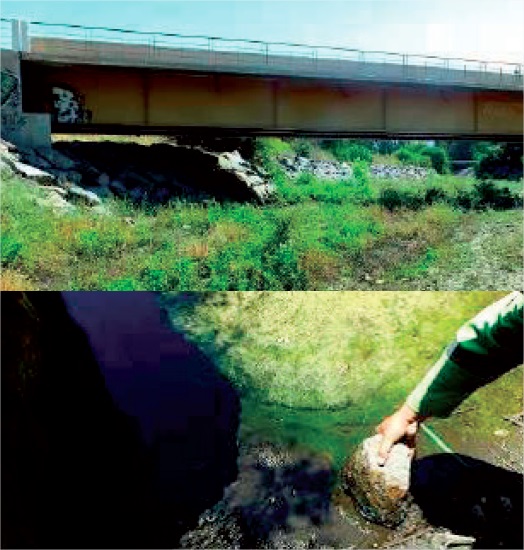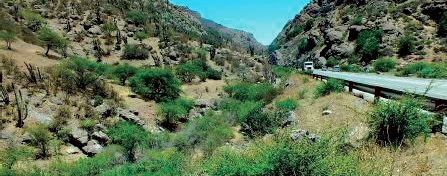Improvement of Las Chilcas Mountain Road
Description of the Environmental Measure
Problem detected:
One of the main objectives of the Environmental Management Plan of the Project “Improvement of Las Chilcas Mountain Road” is to minimise the environmental impacts on the low-mobility threatened wildlife, in particular the Andean Toad (Bufo spinulosus).
Relocation and wildlife rescue programmes are a conservation tool to reduce the loss of genetic variation that occurs in species threatened by the reduction or disappearance of their populations. These efforts of capture are aimed more at rescuing individuals and safeguarding their gene pool than saving entire population groups.
This type of rescue is appropriate in projects such as this one, which modifies the habitat in a specific and limited area, where there are few threatened species.
Solutions adopted:
The operations to rescue and relocate the individual animals with low mobility commenced, applying the protocol for amphibian sampling. Each operation lasted three days and was carried out by a team consisting of two specialists and two technicians.
The success of the capture was based on Zippin's population removal index, which explains how all of the individuals in the area can be found by means of consecutive samplings in the area. In order to o this 100 m2 cross-sections were conducted in the rescue zone in which samplings were conducted until all individuals had been captured. A mesh bag was used to contain the amphibians collected. The entire riverbank zone was inspected between the foliage and stones in the moist sectors.
Meanwhile work proceeded in parallel to select the area where the animals would later be released. This area has to have the minimum abiotic and biotic tolerance ranges for the species in question; in other words, an area was selected similar to the one where the animals were captured, with special consideration of the food resources and places where they could seek shelter.
Results:
Due to the conditions of environmental stress of the Las Chilcas estuary, owing to the total lack of water, no individuals of Bufo spinulosus or any other type of amphibian were found in the first search, although the protocol for amphibian rescue was followed precisely.
The absence of the species that it was intended to rescue and of any other species of amphibians, was essentially due to the environmental conditions that were encountered: drought, a totally dry water course, and exposure to average temperatures of 35 degrees centigrade, characteristic of such a hostile habitat.
Despite not having detected the presence of this protected species, circumstances may be different if in the autumn-winter precipitations restore the balance of the water level in the estuary, allowing juvenile or adult individual amphibians to be carried from the higher levels by run-off water. Therefore, the project management has proposed to continue with the monitoring program during the autumn-winter, when there is water availability as a result of precipitation and then in the spring to assess whether there has been any colonisation by species.

Las Chilcas riverbed - totally dry

A section of the riverbed colonised by bushes, which shows that there has been no flow of water

The area selected for release, where there are zones with available water and humid substrate.

A photograph showing the landscape around Las Chilcas, the habitat of Bufo spinulosus








